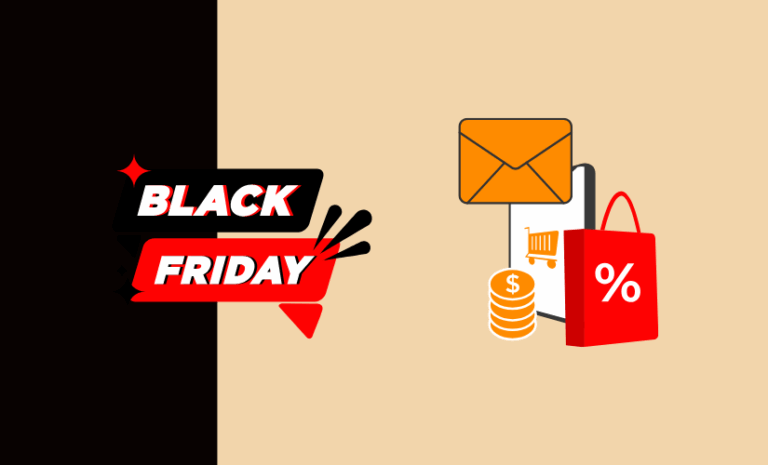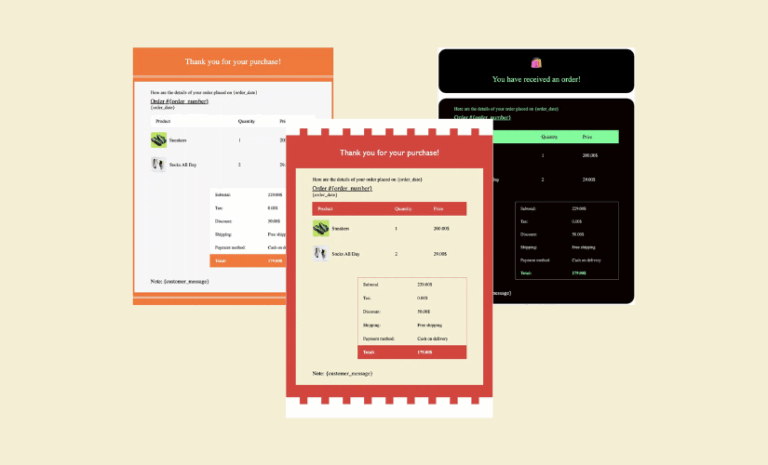Behavioral targeting in email marketing is an effective strategy for eCommerce businesses. By using data on how customers interact with your website and emails, you can create personalized and relevant content that resonates with each individual. This approach helps you send the right message at the right time, increasing engagement, boosting conversions, and building stronger customer relationships.
From tracking purchase history to monitoring email opens, behavioral targeting allows you to maximize the impact of your email campaigns and drive eCommerce success.
In this post, we will discuss behavioral targeting in email marketing, understand its scope and benefits for eCommerce stores, and finally give you ways to effectively utilize behavioral targeting in email marketing for eCommerce stores.
What is Behavioral Targeting?

Behavioral targeting involves analyzing and utilizing data on the actions and behaviors of individuals to deliver tailored marketing messages. In the context of email marketing, this means sending emails based on the user’s browsing history, purchase history, interaction with previous emails, and other behaviors.
Common Types of Behavioral Targeting
Behavioral targeting allows marketers to tailor their messages based on specific user actions and preferences. By focusing on different types of behaviors, businesses can deliver highly personalized and relevant content, leading to increased engagement and conversions. Here are some common types of behavioral targeting that can help you optimize your email marketing strategy:
Website Engagement
This type of targeting focuses on how users interact with your website. It includes tracking pages viewed, time spent on the site, and specific actions taken (such as clicking on links or downloading resources). By understanding these behaviors, you can send personalized emails with relevant content, product recommendations, or special offers to re-engage users.
Purchase Behavior
Target customers based on their buying habits. This involves analyzing past purchases, frequency of purchases, and spending patterns. You can then send tailored emails with product recommendations, loyalty rewards, and special discounts to encourage repeat purchases and increase customer lifetime value.
Campaign Engagement
Focus on how recipients interact with your email campaigns. Track metrics such as open rates, click-through rates, and conversion rates to determine the effectiveness of your emails. Use this data to segment your audience and send follow-up emails that align with their engagement level. For example, you might send re-engagement emails to those who haven’t opened recent campaigns or special offers to highly engaged users.
87% of consumers say it’s important to buy from a brand or retailer that “understands the real me.
Accenture
Customer Behavioral Patterns or Events to Better Target in Email Marketing
Understanding how your customers behave online can greatly improve your email marketing efforts. By analyzing specific actions and events, such as what products they view, how often they visit your site, or what they purchase, you can tailor your emails to meet their unique needs and interests. This approach, known as behavioral targeting, allows you to send more relevant and personalized emails, leading to higher engagement and better sales. Let’s explore the key customer behaviors and events you can use to create more effective email marketing campaigns.
Product and Content Preferences
Based on user interactions with specific product pages or blog posts, send targeted content that aligns with their interests. Track which products customers view on your website. Use this information to send personalized recommendations, and updates on those products, or related items they might be interested in.
Purchase History
Identify frequent buyers, high-value customers, and those who have purchased specific product categories. Tailor your emails to their preferences and buying habits.
Purchasing Products in Particular Categories
Identify customers who frequently purchase from specific categories. Tailor your emails to highlight new arrivals, promotions, or popular items within those categories.
Purchasing High or Low Priced Products
Segment customers based on their spending habits. For high-value customers, send exclusive offers or early access to sales. For those who purchase low-priced items, highlight budget-friendly options and deals.
Abandoned Carts
Send reminder emails to users who have added items to their cart but haven’t completed the purchase. Include incentives like discounts or free shipping to motivate them to finalize their purchase.
Email Engagement
Analyze how recipients interact with your emails, including open rates, click-through rates, and time spent reading. This helps in refining your email content and frequency.
Onboarding and Welcome Events
Monitor new subscriber sign-ups and send a series of welcome emails to introduce your brand, products, and any special offers.
Seasonal and Time-based Patterns
Recognize buying patterns related to holidays, seasons, or specific times of the year. Tailor your email campaigns to match these trends.
Customer Feedback and Reviews
Utilize feedback from surveys and reviews to segment customers based on their satisfaction levels and address their needs through targeted emails.
Lifecycle Stage
Segment your audience based on their stages in the customer journey, such as new visitors, active users, or inactive users. Send tailored messages to move them further down the funnel.
Geolocation Data
Use the geographic location of your customers to send location-specific promotions and information.
Wish Lists and Favorites
Target customers who have added items to their wish list or favorites but have not yet purchased them.
Event Registrations and Participation
Send follow-up emails to users who register for events, webinars, or other activities to keep them engaged and informed.
By leveraging these behavioral patterns and events, you can create highly targeted and effective email marketing campaigns that resonate with your audience and drive conversions.
Key Benefits of Behavioral Targeting in Email Marketing
Behavioral targeting in email marketing offers numerous advantages that can significantly enhance your campaigns’ effectiveness and drive better results. Here are the key benefits:
Increased Relevance
By sending emails based on specific user behaviors, you can ensure that the content is highly relevant to the recipient. This relevance increases the likelihood of the email being opened, read, and acted upon.
Higher Engagement Rates
Personalized emails tailored to individual behaviors tend to capture more attention and generate higher engagement. Users are more likely to interact with content that reflects their interests and actions.
Improved Conversion Rates
When emails are relevant and engaging, recipients are more likely to convert. Whether the goal is to make a purchase, sign up for an event, or complete another action, behavioral targeting can drive better conversion rates.
Enhanced Customer Experience
Providing personalized and relevant content improves the overall customer experience. It shows that you understand and value your customers, which can foster loyalty and long-term relationships.
Reduced Unsubscribe Rates
When recipients receive emails that are pertinent to their interests and behaviors, they are less likely to unsubscribe. Behavioral targeting helps in maintaining a healthy and engaged email list.
Optimized Campaign Performance
By analyzing behavioral data, you can continuously optimize your email campaigns. This data-driven approach allows for more informed decisions and better overall performance.
Higher ROI
Effective behavioral targeting can lead to a higher return on investment (ROI) for your email marketing efforts. Personalized campaigns often yield better results, making your marketing spending more efficient.
Better Customer Retention
Targeted emails that address specific customer needs and preferences can enhance satisfaction and loyalty, leading to better customer retention rates.
Increased Sales Opportunities
Behavioral targeting enables you to identify and capitalize on sales opportunities, such as recommending complementary products or upselling based on previous purchases.
How to Utilize Behavioral Targeting in Email Marketing
Behavioral targeting in email marketing is a powerful strategy that leverages customer behavior data to deliver personalized and relevant content. By understanding and responding to specific actions and preferences, businesses can significantly enhance the effectiveness of their email campaigns. Whether it’s analyzing purchase history, tracking browsing patterns, or monitoring email engagement, utilizing behavioral targeting allows for more precise and impactful communication with your audience. This approach not only improves engagement and conversion rates but also fosters a stronger connection with customers by addressing their unique needs and interests.
Collect and Analyze Data
Start by gathering data on customer behaviors from your website, email interactions, and purchase history. Use analytics tools to interpret this data and segment your audience accordingly.
Better to use an email marketing tool that integrates well with your eCommerce platforms and collects these data for your store.
Segment Your Audience
Divide your audience into specific segments based on behaviors such as browsing history, purchase patterns, and email engagement. Create targeted email lists for each segment.
Create Personalized Content
Develop personalized email content that resonates with each segment. Use dynamic content to tailor subject lines, product recommendations, and offers based on individual behaviors.
Implement Triggered Emails
Set up automated emails that are triggered by specific user actions, such as cart abandonment, product views, or past purchases. These emails can provide timely and relevant content to encourage conversions.
Use A/B Testing
Regularly conduct A/B tests to determine the most effective email elements, such as subject lines, layouts, and call-to-actions. Use the results to optimize your campaigns continuously.
Monitor and Adjust
Continuously monitor the performance of your email campaigns using key metrics such as open rates, click-through rates, and conversions. Adjust your strategies based on these insights to improve effectiveness.
Integrate with Other Channels
Combine behavioral targeting in email marketing with other channels like social media, SMS, and retargeting ads for a cohesive multi-channel strategy. This ensures consistent and personalized communication across all touchpoints.
Ensure Compliance
Make sure your data collection and email practices comply with privacy regulations such as GDPR and CAN-SPAM. Obtain consent from users and provide easy opt-out options.
Utilize Real-Time Data
Leverage real-time data to send timely and contextually relevant emails. For example, send a reminder about an abandoned cart shortly after the user leaves the site or notify customers about a flash sale.
Gather Feedback
Incorporate feedback mechanisms within your emails, such as surveys or review requests, to gain insights directly from your customers. Use this feedback to further refine your targeting and content strategies.
If you are running an eCommerce store, it is important that your WooCommerce emails also be sent accurately, you can use Email Customizer for WooCommerce – Virfice to customize WooCommerce emails and make sure your store emails represent your brand.

By following these steps, you can effectively utilize behavioral targeting to enhance your email marketing campaigns, resulting in higher engagement, better conversion rates, and improved customer satisfaction.
Behavioral targeting in email marketing is essential for any eCommerce business aiming to enhance customer engagement and drive sales. By leveraging data on customer behaviors such as purchase history, website interactions, and email engagement, you can create highly personalized and relevant email campaigns. Implementing strategies like segmenting your audience, using triggered emails, and conducting A/B tests will ensure your emails resonate with your audience and encourage conversions. Embracing these practices not only boosts your marketing effectiveness but also builds stronger, more loyal customer relationships, ultimately leading to greater e-commerce success.



